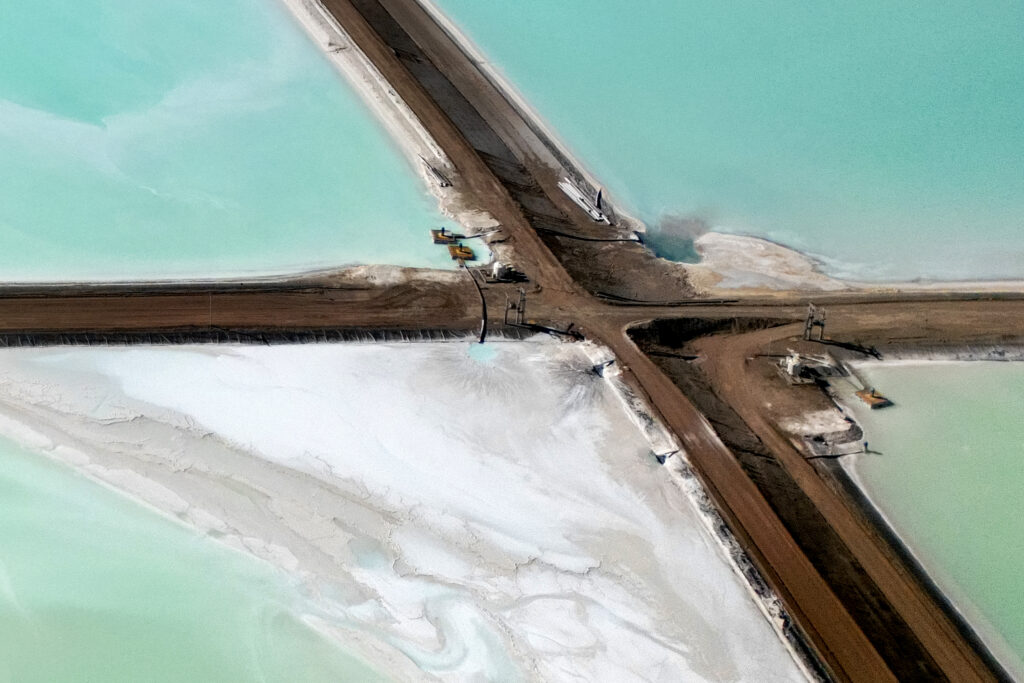Europe’s lithium quest hampered by China and lack of cash
Europe’s ambition to be a world player in decarbonised transportation arguably depends on sourcing lithium abroad, especially in South America.Even the bloc’s broader energy security and climate goals could depend on securing a steady supply of the key mineral, used in batteries and other clean energy supply chains.But Europe has run into a trio of obstacles: lack of money, double-edged regulations and competition from China, analysts told AFP.China has a major head start.It currently produces more than three-quarters of batteries sold worldwide, refines 70 percent of raw lithium and is the world’s third-largest extractor behind Australia and Chile, according to 2024 data from the United States Geological Survey.To gain a foothold, Europe has developed a regulatory framework that emphasises environmental preservation, quality job creation and cooperation with local communities. It has also signed bilateral agreements with about 15 countries, including Chile and Argentina, the world’s fifth-largest lithium producer.But too often it fails to deliver when it comes to investment, say experts.”I see a lot of memoranda of understanding, but there is a lack of action,” Julia Poliscanova, director of electric vehicles at the Transport and Environment (T&E) think tank, told AFP.”More than once, on the day that we signed another MoU, the Chinese were buying an entire mine in the same country.”The investment gap is huge: China spent $6 billion on lithium projects abroad from 2020 to 2023, while Europe barely coughed up a billion dollars over the same period, according to data compiled by T&E.- Lagging investment -At the same time, the bottleneck in supply has tightened: last year saw a 30 percent increase in global demand for lithium, according to a recent report from the International Energy Agency (IEA).”To secure the supply of raw materials, China is actively investing in mines abroad through state-owned companies with political support from the government,” the IEA noted.China’s Belt and Road Initiative funnelled $21.4 billion into mining beyond its shores in 2024, according to the report.Europe, meanwhile, is “lagging behind in investment levels in these areas”, said Sebastian Galarza, founder of the Centre for Sustainable Mobility in Santiago, Chile.”The lack of a clear path for developing Europe’s battery and mining industries means that gap will be filled by other actors.”In Africa, for example, Chinese demand has propelled Zimbabwe to become the fourth-largest lithium producer in the world.”The Chinese let their money do the talking,” said Theo Acheampong, an analyst at the European Council on Foreign Relations.By 2035, all new cars and vans sold in the European Union must produce zero carbon emissions, and EU leaders and industry would like as much as possible of that market share to be sourced locally.Last year, just over 20 percent of new vehicles sold in the bloc were electric. “Currently, only four percent of Chile’s lithium goes to Europe,” noted Stefan Debruyne, director of external affairs at Chilean private mining company SQM. “The EU has every opportunity to increase its share of the battery industry.”- Shifting supply chains -But Europe’s plans to build dozens of battery factories have been hampered by fluctuating consumer demand and competition from Japan (Panasonic), South Korea (LG Energy Solution, Samsung) and, above all, China (CATL, BYD).The key to locking down long-term lithium supply is closer ties in the so-called “lithium triangle” formed by Chile, Argentina and Bolivia, which account for nearly half of the world’s reserves, analysts say. To encourage cooperation with these countries, European actors have proposed development pathways that would help establish electric battery production in Latin America.Draft EU regulations would allow Latin America to “reconcile local development with the export of these raw materials, and not fall into a purely extractive cycle”, said Juan Vazquez, deputy head for Latin America and the Caribbean at the OECD Development Centre.But it is still unclear whether helping exporting countries develop complete supply chains makes economic sense, or will ultimately tilt in Europe’s favour. “What interest do you have as a company in setting up in Chile to produce cathodes, batteries or more sophisticated materials if you don’t have a local or regional market to supply?” said Galarza.”Why not just take the lithium, refine it and do everything in China and send the battery back to us?”Pointing to the automotive tradition in Mexico, Brazil and Argentina, Galarza suggested an answer. “We must push quickly towards the electrification of transport in the region so we can share in the benefits of the energy transition,” he argued.But the road ahead looks long. Electric vehicles were only two percent of new car sales in Mexico and Chile last year, six percent in Brazil and seven percent in Colombia, according to the IEA.The small nation of Costa Rica stood out as the only nation in the region where EVs hit double digits, at 15 percent of new car sales.
Cheap alms bowls imports hit Sri Lanka makers, monks
The alms bowl is a symbol of monks, yet in Sri Lanka artisans are struggling as cheap substitutes flood the market, igniting a debate over Buddhist tradition and quality.The village of Panvila has long been associated with craftsmen who produce the humble “paathra”, the special bowl that forms part of the eight essentials donated to monks and which is used to ask for food.Thenuwara Badalge Sarath, 65, says he is the only blacksmith left in a village that once supplied much of the country.”When I learnt the craft from my father, there were more than 10 families in the neighbourhood who made these bowls,” Sarath told AFP, while hammering a piece of scrap metal into a holy utensil.”Today, I am the only one keeping up the tradition. My son died recently in a road accident, and there is no one to carry on this line of work after I am gone,” said the fourth-generation craftsman.He spends about a week producing a batch of five to six bowls from discarded steel barrels. He sells each for 600 rupees ($2), but competition from cheap imports is tough.”There are aluminium bowls that come from abroad. They are cheaper and lighter — we can’t compete,” Sarath said at his village smithy, near the southern tourist resort of Hikkaduwa.- Karma drives demand -The Buddhist-majority nation of some 22 million people has just over 42,000 monks, but the demand for bowls is disproportionately high because of the positive karma attached to offering them to temples.Kirinde Assagi, a leading Buddhist monk, said the alms bowl forms part of the eight items for a monk to lead an ascetic life and spread the teachings of Buddha, along with two robes, a razor, a straining cloth, a needle and thread, and a belt.”The bowl is his livelihood. When a monk goes out begging with his bowl, he gets sustenance”, Assagi said.”Because gifting ‘ata pirikara’ to monks brings enormous good karma, devotees clamour to donate this,” said the monk, in reference to the eight-item package.At his Gangaramaya temple in the capital Colombo there were nine such packages donated within an hour one weekend.- ‘Mountain’ of discarded pots -Assagi says most of the bowls however are of poor quality, made out of aluminium and unfit to serve food in.In a storeroom at the back of his temple, there is a huge pile of bowls that monks say are not suitable even for offering food to household pets.”I will show you a mountain of begging bowls that we have discarded. We make holes at the bottom and repurpose them for potted plants.”Monks in Thailand, Myanmar, and Laos traditionally seek alms every morning, underscoring their simple life and demonstrating that their livelihood depends on others.But the influx of cheap bowls is impacting the dawn ritual.”We see the practice of monks begging slowly dying off as the quality of the bowls goes down,” he said.The Gangaramaya temple in Colombo has campaigned to improve the quality of utensils offered to monks and revive the ritual of seeking alms.Assagi said the Thai royal family has in recent years gifted more than 27,000 high qualitiy stainless steel bowls to Sri Lankan monks, most of whom are followers of the Siam sect of Buddhism practised in that nation.Unlike the financially well-off Gangaramaya, smaller temples are known to sell their excess bowls back to the market in a move that undermines traditional craftsmen such as Sarath.”When the bowls go back to the shop from a temple, we find it difficult to sell our produce,” Sarath said. He is trying to convince devotees that there is less merit in offering bowls that are being regifted.

